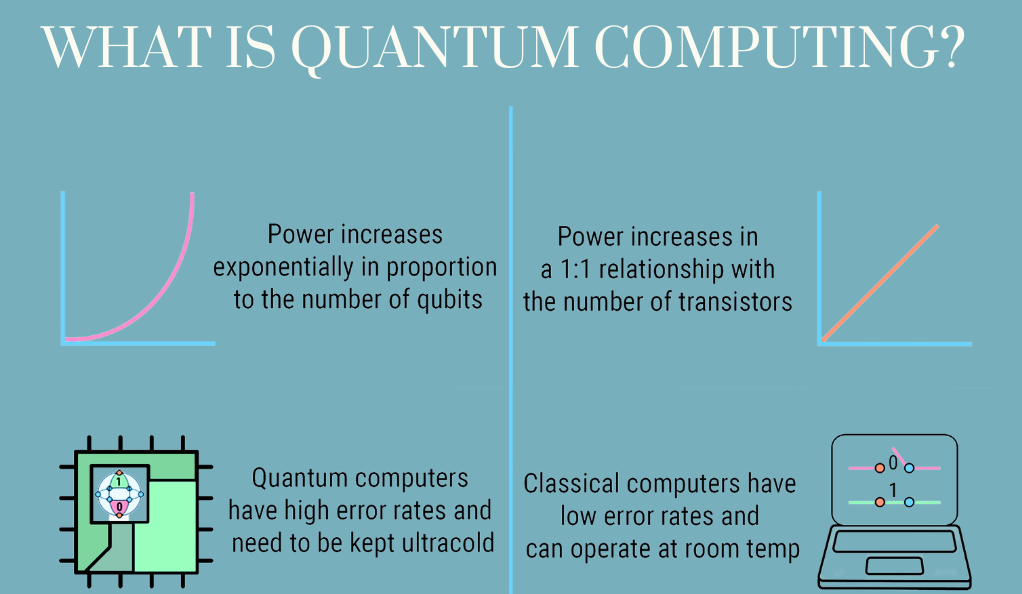In the vast realm of modern science and technology, quantum computing emerges as a profound paradigm shift, reminiscent of trying to navigate a labyrinth that possesses an infinite number of paths and possibilities. Beyond mere computation, it represents an unparalleled fusion of physics, mathematics, and computer science, leading to revolutionary potentials that challenge the conventional architectures of classical computing.
At its core, quantum computing harnesses the peculiar characteristics of quantum mechanics, notably superposition and entanglement. Imagine a coin spinning in the air; while it spins, it exists in a state of both heads and tails simultaneously. This is akin to a quantum bit, or qubit, which, unlike classical bits that are definitively 0 or 1, can occupy multiple states at once. This ability to exist in multiple states catalyzes computational power exponentially. For example, a system with just 10 qubits can represent 1,024 different states simultaneously, illustrating a remarkable potential for processing large datasets far beyond the capacity of classical systems.
Furthermore, entanglement introduces a stunning interplay between qubits where the state of one qubit can instantaneously influence another, regardless of the distance separating them. This phenomenon transcends our traditional understanding of information transfer, offering a glimpse into a new dimension of connectivity analogous to a symphony, where each instrument harmonizes perfectly, creating a cohesive auditory masterpiece.
The implications of quantum computing are far-reaching and multifaceted. Renowned for their potential to revolutionize cryptography, quantum computers could enact the old adage “knowledge is power.” The advent of quantum cryptography proposes techniques, such as Quantum Key Distribution (QKD), which could render traditional encryption methods obsolete. The Eavesdropper’s dilemma illustrates this: any attempt to intercept quantum keys would disturb the quantum state, alerting the parties involved. Thus, privacy and security operate not on the reliance of complexity, but rather on the fundamental laws of quantum mechanics—a cornerstone of future digital communication.
Quantum algorithms, such as Shor’s algorithm and Grover’s algorithm, exemplify this revolutionary potential. Shor’s algorithm empowers efficient factorization of large integers, placing stress upon the foundational underpinnings of current encryption systems. On the other hand, Grover’s algorithm, with its quadratic speedup for unstructured search problems, signifies a leap in optimization capabilities. Both instill a distinct sense of urgency within the classical computing domain, prompting a reevaluation of what is possible.
The landscape of scientific research also stands to benefit considerably from quantum computing. Problems previously deemed intractable, such as simulating molecular interactions for drug discovery or optimizing complex systems in logistics, become manageable. Quantum simulation, akin to a finely tuned microscope, permits researchers to peer into the behavior of matter at an atomic scale, yielding insights that could lead to novel materials and revolutionary therapeutic agents.
Yet, the quest for practical quantum computers is laden with challenges. Quantum states are notoriously fragile, susceptible to their environment, a phenomenon known as decoherence. Leading researchers liken these delicate systems to a glass structure balancing on a pin—unfavorably exposed to perturbations. To combat this, various platforms are being explored, from superconducting circuits and trapped ions to topological qubits. Each holds distinct advantages and hurdles, marking the current era as a period of feverish experimentation and innovation.
Moreover, the transition from theoretical frameworks to tangible applications necessitates the development of robust quantum error correction techniques. These strategies often involve redundancy and complex encoding schemes to preserve the integrity of qubit states against errors induced by external interference. The intricacies of this process resemble the meticulous craft of weaving—individual threads interlaced to form a cohesive and resilient tapestry that survives the tests of time.
Quantum computing also poses profound ethical and philosophical questions. The prospect of machines capable of solving problems beyond human reach invites contemplation of the implications for intellect and agency. As these technologies burgeon, considerations surrounding equity in access and the moral ramifications of deploying such powerful computational tools must be thoughtfully navigated. The interplay of innovation and responsibility embodies the ethical frontier associated with this burgeoning domain, challenging society to ponder how quantum capabilities can be deployed judiciously.
In conclusion, quantum computing epitomizes a confluence of possibility and complexity, intertwining the strands of science fiction and reality. As we embark on this transformative journey, the potential to revolutionize industries ranging from finance to healthcare beckons. The allure of the quantum realm lies not solely in its computational prowess but also in its ability to reshape our understanding of the universe itself. The unfolding narrative of quantum computing is not merely a technological saga; it is a bold exploration into the very fabric of reality, inviting us to reconsider what it means to compute, to connect, and indeed, to exist in an increasingly complex world. The journey ahead may be fraught with challenges, but therein lies the essence of human curiosity—the ceaseless drive to illuminate the unknown.












